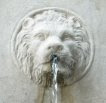Pseudo-Ezekiel & Barnabas
The Epistle of Barnabas is a Christian writing from the end of the first to the beginning of the second century. Many of the early church fathers not only considered it scripture, but believed it was written by Barnabas himself. Curiously, the Epistle quotes from (and considers prophetic scripture) a text that previously did not exist independently until it was found in the Dead Sea Scrolls...
In like manner He points to the cross of Christ in another prophet, who saith, 'And when shall these things be accomplished? And the Lord saith, When a tree shall be bent down, and again arise, and when blood shall flow out of wood.' Here again you have an intimation concerning the cross, and Him who should be crucified.
--Epistle of Barnabas, 12:1
And I said, 'Lord, when will these things come to pass?' And the Lord said to me, '...a tree will bend and stand up...'Pseudo-Ezekiel is dated paleographically to about the middle of the first century BC. What is interesting is this portion of Pseudo-Ezekiel refers to the vision of the valley of dry bones. In Ezekiel 37, physical resurrection of the dead at the eschaton is not in view. Instead, the dry bones coming to life metaphorically refers to the restoration and return of Israel from exile. But Pseudo-Ezekiel turns this prophecy of restoration and return into a prophecy of physical resurrection from the dead:
--Pseudo-Ezekiel (Second Ezekiel), 4Q385, Vermes
And he said again, 'prophesy concerning the four winds of heaven and let the win[ds of heaven] blow [on them and they shall live.] And a great crowd of men shall stand and they will bless the Lord of hosts wh[o revived them.]“Barnabas” links the second temple belief in communal resurrection as seen in 4Q385 with the death and resurrection of Yeshua based on the reference to a tree bowing down (dying?) and rising up (resurrecting?) and blood coming from wood (crucifixion?).
--Pseudo-Ezekiel (Second Ezekiel), 4Q385, Vermes

0 Comments:
Post a Comment
<< Home